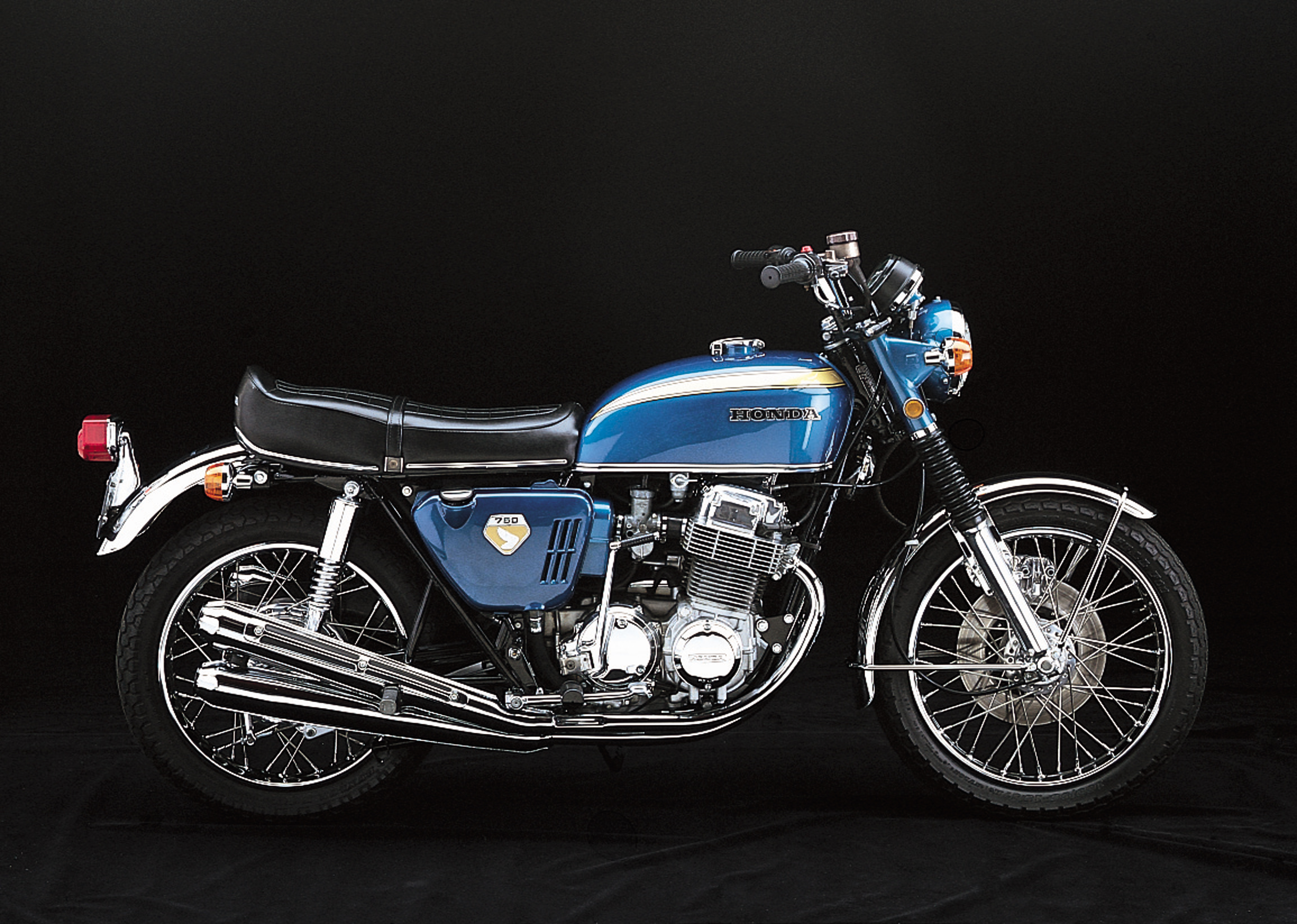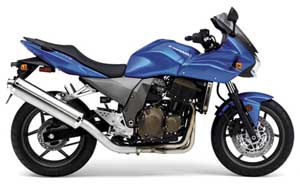Yesterday, as the overly moneyed and under IQed owner of a Range Rover futilely tried to out-accelerate my 650cc Kawasaki Versys from a stoplight, no doubt so he could jump in front of me before the road dropped from four lanes to two a quarter of a mile ahead, and then hold me up for the next ten miles of curves, a question occurred to me: Whatever happened to 750 cc street bikes?
Of course it was purely a theoretical mental exercise. Even without using the upper half of the rev range, my Versys easily stayed ahead of the Range Rover, which costs about 15 times as much, so it’s not like I needed a 750 cc four-cylinder engine under me to keep from staring at the ass end of an overpriced SUV for ten miles. (And I was right: at the first curve, the wallowing behemoth slipped to a dot in my mirrors, proving that he would have held me up if I’d let him pass me.)
Apart from that old truism (How much power do you need? Just a little more than you have.), no, I don’t need an extra 100 cc and two cylinders beyond what my Versys, my everyday ride, offers. But if you asked me to describe the perfect motorcycle to meet my ordinary transportation and travel needs, I’d probably describe a thoroughly street-oriented 750 cc four-cylinder motorcycle.
All the Japanese manufacturers used to build one. Now nobody does.

The ground-breaking 1969 Honda CB750.
Of course it was the 1969 Honda CB750 that invented the mold that has since, it seems, been broken and discarded. The CB750’s combination of its overhead cam engine making around 68 horsepower, disc front brake, electric starter and price tag under $1,500 made other performance bikes of the era, such as the 650 cc twins out of Britain, look like horse buggies: slow, unrefined and antiquated.
Within a few years, all the Japanese manufacturers made 750 cc fours. Some buyers wanted more displacement and bought bigger bikes, and others wanted to spend less and bought smaller bikes, but the 750 was the sweet spot, big enough to provide power for the wide open spaces of North America but small enough to remain agile and sporting.
It’s no coincidence that when the United States imposed protective tariffs in the 1980s, the cutoff line was 700 cc. The law took aim at imported 750 cc (and larger) motorcycles, to give Harley-Davidson a second chance at life.
That led to several years of Japanese motorcycles being reduced to 700 cc to avoid the tariffs. But that wasn’t the real cause of the gradual disappearance of 750 cc street bikes. As motorcycles grew more specialized, it no longer made financial sense to build a 750 cc sport bike to slot in between a fizzy 600 and a powerful 1000. And as for cruisers, 750 was seen as too small. Cruisers must be big and manly, with displacement larger than a Honda Civic, though it’s OK if the Civic engine makes a lot more power.
So the 750s basically disappeared.
It’s not that I want a 1969 CB750 for my everyday ride. I would like to have the modern equivalent, however. In my imaginings, a bike with modern brakes and suspension, a half fairing for weather protection, the ability to fit hard saddlebags for traveling, rolling on common-size 17-inch wheels and powered by a fuel-injected, liquid-cooled 750 cc inline four approaching 100 horsepower and tuned for a flat torque curve would still be the sweet spot of motorcycling: Not too much, not too little, just right.
For years, about the only thing close to that in the marketplace was the Honda VFR750, later a VFR800. The VFR inspired fanatical followings in some corners, but with its V4 engine and gear-driven cams, cost and complexity exceeded what I had in mind. Then, when Honda introduced variable valve timing, and the valve adjustment instructions ran to more pages than the procedures for docking with the International Space Station, cost and complexity took another jump upward. Now, the VFR has moved up to liter-plus displacement and even greater levels of complexity.
In the 1990s, Honda correctly saw that a lot of middle-aged Boomers were re-entering the motorcycle market. Honda incorrectly assumed they’d want something familiar and not too expensive, so they built the plain-looking CB750 Nighthawk, a bargain at $3,999 and the essence of simplicity, with its air-cooled 750 cc inline four that needed no valve adjustments and would cause no cognitive dissonance for anyone who last lusted for a motorcycle when the 1969 CB750 was new. The Nighthawk was a bargain, was practical, and was the perfect way to get back into motorcycling. So naturally, instead of buying it, Boomers rushed to spend their HELOC money on vastly more expensive Harley-Davidsons and TV show choppers that were just as slow as the Nighthawk but screamed louder for attention.
Kawasaki then produced the ZR-7S, which had a fairly attractive half fairing, but it was held back by an absurdly outdated air-cooled engine whose DNA dated to the 1980s.

2005 Kawasaki Z750S, a fine motorcycle whose sales figures numbered in the tens.
In 2005, I had the opportunity to attend the press introduction for a motorcycle that appeared, at least on paper, to be the embodiment of that motorcycling ideal I’d imagined. The Kawasaki Z750S, which replaced the low-tech ZR-7S, had a fuel-injected engine and a half fairing that did a good job of managing the wind. Brakes and suspension were not outstanding, but they were modern and adequate.
But the engine was a sleeved-down 1000 cc piece Kawasaki took off the shelf, and it buzzed annoyingly. The Z750S wasn’t especially light, and the handling made it feel heavier. Absolutely nobody bought them. As a result, they rarely show up on the used market, but when they do they linger and can often be had cheap, because most potential buyers have no idea what they are. Twice I came close to buying one, but in the end I bought the Versys, instead, which is far more nimble.
Maybe I should just forget about dreaming of the imaginary perfect 750. The Versys offers the wind protection, travel ability and light handling of my fictional 750, though the Versys is well down on power compared to what a modern 750cc four-cylinder could do. And despite its age, my 885cc Speed Triple offers the combination of power and handling I imagine (but forget about wind protection or saddlebags).
So yeah, maybe I already have that imaginary 750. It’s just that I have it in the form of two bikes, one with the power and handling, and the other with everything but the power. And maybe that’s enough. After all, those Range Rovers are dog slow.
